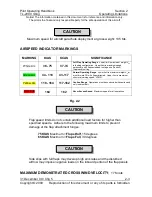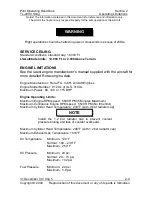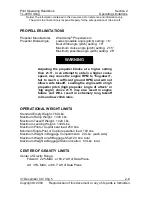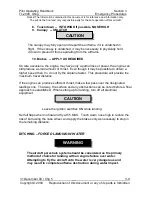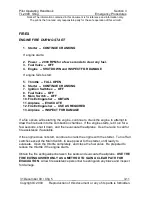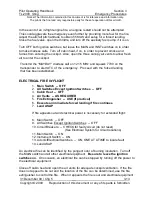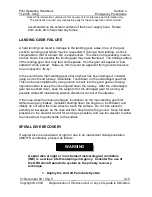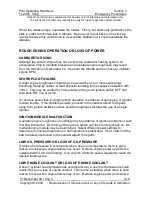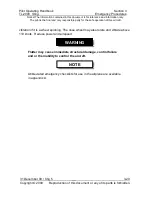
Pilot Operating Handbook
Section 3
TL-2000
Sting
Emergency Procedures
Notice! The information contained in this document is for reference and information only.
The pilot is the final and only responsible party for the safe operation of this aircraft.
31 December 09 / Chg 5
__
3-8
Copyright © 2009 Reproduction of this document or any of its parts is forbidden.
If engine failure occurs at a high cruise speed, maintain the current
attitude and altitude until slowing to V
G.
Do NOT attempt a “zoom”
maneuver to gain altitude.
Leave the main and instrument switches on for as long as possible. Tune the VHF to
121.5 MHz. This is the VHF emergency frequency and is monitored by air traffic
control (ATC) and other aircraft. Transmit, “Mayday, Mayday, Mayday,” followed by
the airplane’s ID number, current position, and altitude. Squawk 7700 on the
transponder.
While performing the engine restart/shutdown checklist, maintain 70 KIAS and keep
in mind where the landing zone is located. CIRCLE OVER THE LANDING ZONE IF
POSSIBLE until sufficient altitude has been lost to setup for a landing. Do not dive
toward the landing zone if at too high an altitude in order to attempt a safe landing.
Doing so will result in a high energy, high speed approach that is not likely to allow
the aircraft to touch down and stop within the intended area.
To setup for landing, turn off all switches, and tighten the shoulder harnesses. If
possible, land into the wind to ensure adequate airspeed at the slowest possible
ground speed. Always use Full flaps for landings. Do
NOT
attempt to stall the aircraft
just above the ground.
Touchdown with the main gear first, and try not to allow the nose to touch the
surface. Allowing the nose to touch too hard could cause it to dig into the ground
possibly flipping the airplane. Apply the brakes as necessary to stop the airplane in
the available distance. Be mindful of the landing zone surface. If it is soft, the
landing gear may plow into it. If the surface is wet or grassy, the airplane may be
difficult to control, and the wheels may hydroplane if hard braking is attempted.
PRECAUTIONARY LANDING
WITH ENGINE POWER
(OFF AIRPORT)
1. Airspeed -- 70 KIAS
2. Flaps -- HALF
3. Harnesses -- TIGHTEN
4. Selected Field -- EXECUTE LOW PASS (only if practical)
5. Electrical Equipment -- OFF (EXCEPT IGNITIONS!)
6. Flaps -- FULL (on final)
7. Airspeed -- 55 KIAS
NOTE


